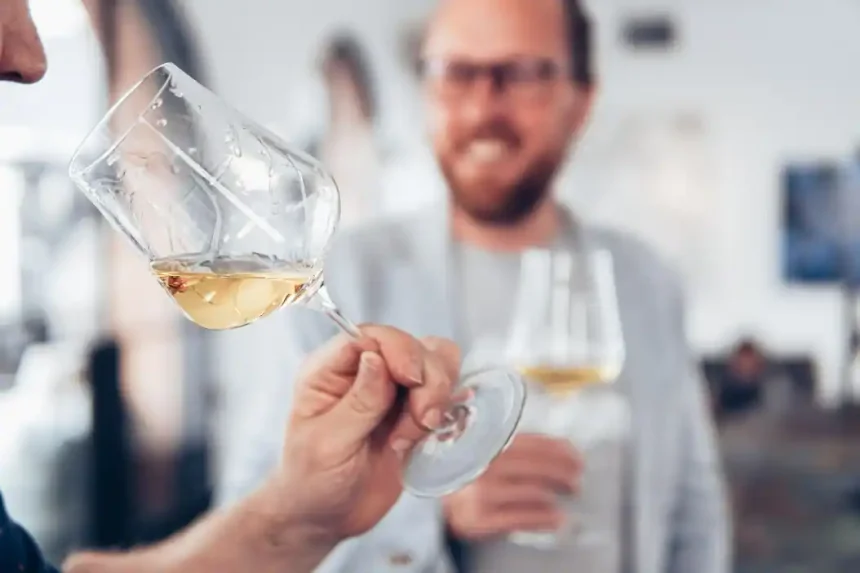Taking on the task of becoming a wine aficionado from the molecule is like discovering a realm full of tastes, fragrances, and complexities. Be it a newbie interest or rather seasons’ experience in wine tasting, your success in refining the craft is all about the ongoing journey of sensory discovery and enjoyment. This is why we have gathered these important advices and ideas for you to learn how to become a wine expert.
An important aspect of proficiency in wine tasting is thus cultivating one’s palate. Start by familiarizing yourself with the basic tastes: sweet, sour, bitter, salty, and savory. Try to exercise your senses by paying attention to these flavors in the ever-usual foods and drinks. This activity builds the bases of wine tasting in which you need to understand the subtle flavors in winemaking.
Each wine has its own features of the variety of the choice of the grapes, terroir, and winemaking techniques as well as aging. Understand the significance of factors, such as acidity, tannins, body, sweetness and alcohol content in wine. Awareness of these characteristics will help you to judge and to rate wines with more competence.
The investment of proper wine glasses can do wonders to the sensory experience for you. Pick up the glasses which are transparent and shaped like a tulip having a narrow diameter that allows for swirling and to concentrate on the aromas. The shape and size of the wine glass in fact influence the intensity of the aroma aromas are aroused by so that you can smell wine better.
Adopt a systematic approach to wine tasting by following the five S’s: Please pay attention to the color, the texture, the elegance of a glass, and then, the taste. Commence by analyzing the wine’s attributes, paying attention to its color, clarity, and viscosity. Tilt the glass just enough to allow some oxidation and the release of the wine’s aromatic notes. Place the glass near your nose and smell the aromatics that are mixing up. Carefully examine their numerous characteristics. Do a moderated swallow, letting you feel the rolling of the wine in your mouth so that you can discern its taste. Then, enjoy the wine and your last sip, and think about all your impressions.
Make use of sensory evaluation practice to improve your sensory acuity. Train your nose by working on the exercises of aroma identification of various scents that you can find in wine –fruity, spicy, herby, and floral notes. Also, train the faculty of oral perception of things like mouthfeel, body, and the structure to have a complete picture of wine’s sensory elements.
Broaden your knowledge by increasing your wine tasting diversity and try as many grape varieties and wine styles as possible made in various parts of the world. Give both red and white wines, as well as sparkling and fortified wines, a try to expand your development and passion. Maintain a tasting notebook where the every time you sample the wine, you record your feelings, the things you liked and the discoveries you made.
To refine your palate and enhance your familiarity with wine, sample various wines and discern their distinct characteristics. You will be able to discover the intricate characteristics of different varieties; for example, you can unveil the complexity of Pinot Noir, a grape which could show as some notes of the fruit, e.g. raspberry or cherry, baking spice and the smell of forest floor which can be stronger when the wine is kept in a French oak barrel. Meanwhile, relish the correct taste of Merlot, manifested by a plum or cherry’s fresh red flavor in cooler weather conditions and finished by a baked blackberry and the fruitcake notes in warm regions. Fuse yourself into either the rounded, ripe fruit flavors of Cabernet Sauvignon, with blackberries, blueberries, green bell peppers and a touch of woodiness and vanilla or the awakening of your true self by the bright, crisp flavors of Sauvignon Blanc, which awakens your taste buds with citrus, passion fruit and green bell pepper. Choose wines of the same grape varieties or styles but produced by different winemakers or regions so you can see if the difference is in their characteristics rather than their style. Be mindful of the details up, such as the aroma, taste, structure and quality of wines. Try to point out the particularities between different wines and appreciate the finest qualities of each one.
Seize the moments that you get to gain knowledge from sommelier professionals, winemakers and wine educators. Participate in wine tasting events, workshops, and seminars to develop abilities in how to taste properly, appreciate wine and food pairing establishment. Build rapport with wine experts and develop your palate by bringing your learning to actual experience.
Essentially, listen to your palate and distinguish what and what does not work with your personal preferences. Refine your skills to grade wine with informative article from 8wines.com, based on your gratification in drinking. Learn not to succumb to conventional standards or scores, but drink wine just because you enjoy it. Recall that sometimes what you like, or dislike is due to silent social factors.
The overall message is that becoming a pro may be a tough challenge, but it is an enjoyable skill to practice with a keen focus on exploration and proper tasting technique. Apply the keys of a good palate and get that added pleasure from wine with your new increased sensitivity. It’s so awesome to watch you embracing your wine journey.

